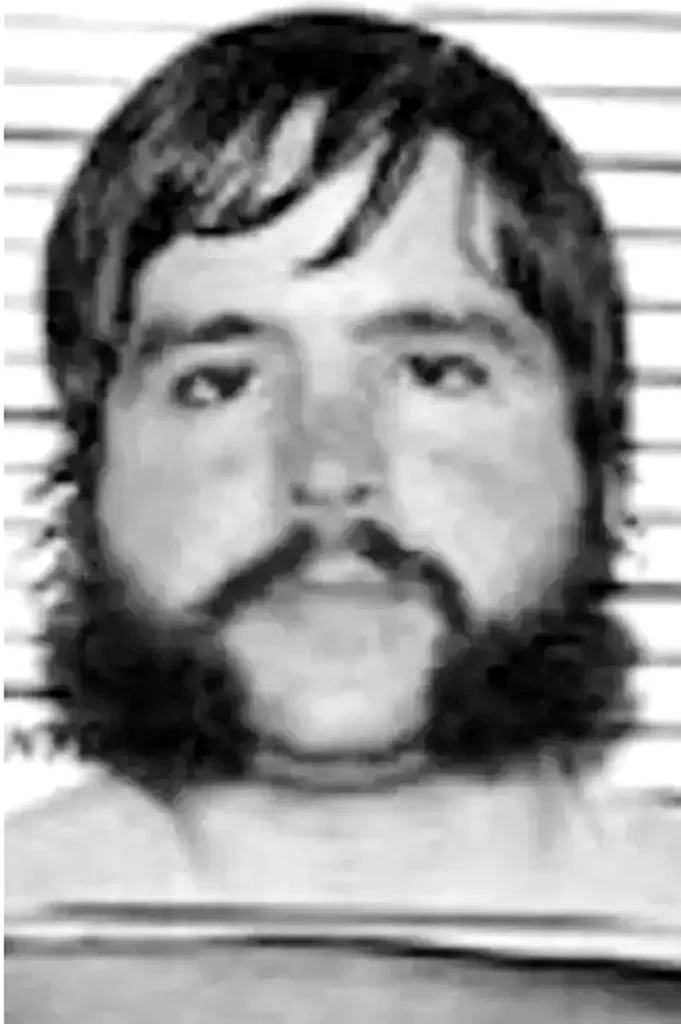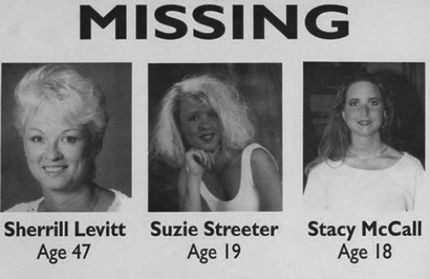Three women vanished from their Springfield, Missouri home on June 7, 1992, leaving no sign of their whereabouts. This case, known as the “Springfield Three,” remains one of America’s most perplexing unsolved mysteries.
The three women at the center of this mystery were Suzanne Streeter, 19, her mother, Sherrill Levitt, 47, and Suzanne’s friend Stacy McCall, 18. They disappeared without a trace, turning a pleasant summer evening into a terrifying incident.

The Disappearance of The Springfield Three
Suzanne Streeter and Stacy McCall were celebrating their high school graduation on June 6, 1992. As part of their plans, they attended several graduation parties around Springfield, intending to drive to a hotel in Branson, Missouri, after the parties and then to a water park the next day. However, as the night went on, they decided to remain at Streeter’s house rather than drive the lengthy distance to Branson late at night.
Streeter’s mother, Sherrill Levitt, was last heard around 11:15 p.m. That night, she discussed painting a chest of drawers with a friend. The girls are thought to have arrived at Streeter’s house around 2:15 a.m. on June 7, as confirmed by a friend who had spoken to them on the phone.
The Next Morning
Janelle Kirby, a friend who had expected Streeter and McCall to show up at the water park that day, got worried when they didn’t. So she drove to Levitt’s house with her boyfriend to check on them. The porch light, with the bulb on the front step, was broken when they arrived.
Inside, they discovered Levitt’s Yorkshire terrier, Cinnamon, who was distressed and alone, but no sign of Streeter, McCall, or Levitt. Notably, the TV was on with a static screen, and the women’s items, including handbags, IDs, makeup, and clothing for the next day, were intact. The cars of Streeter and Levitt were also parked in the driveway.
Kirby and her boyfriend, unsure what to make of the scenario, cleaned up the broken glass from the porch light, assuming it was a prank. But, unfortunately, they had no idea they had unintentionally disrupted a potential crime scene.

The Police Response
After being unable to contact their daughter, Stacy McCall’s parents phoned the police on the evening of June 7. Police initially saw nothing strange because kids are known to change their plans. But, as hours turned into days with no contact from the girls, alarm bells started to ring.
The investigators felt confused after analyzing the scene: the house was locked, there was no trace of struggle or foul play, and everything inside appeared normal. It was as though the women had vanished.
Numerous leads and tips came in over the next few days, weeks, and months. The public was passionately invested, and the story was widely publicized. Yet, despite their best efforts, no viable leads or suspicions emerged.

The Investigation of Springfield Three’s Disappearance
The Springfield Police Department led the investigation into the disappearance of the Springfield Three, which was a rigorous and multi-layered process. While the case was puzzling from the start, law enforcement authorities made substantial efforts to find answers.
Initial Response
When Stacy McCall’s parents reported her missing on the evening of June 7, police took the initial report but did not immediately suspect foul play. With no obvious evidence of a crime, it was assumed that the youths had changed their plans. However, concern developed as time passed without any contact from the girls.
Crime Scene Examination
When it was finally established that the three women were indeed missing, the police moved swiftly to examine the residence. Unfortunately, potential evidence may have been contaminated unintentionally due to the initial entry by friends who had visited the property earlier that day.
Despite this, investigators conducted a comprehensive search of the property. They noticed no signs of forced entry, struggle, or theft. Instead, they discovered the women’s purses heaped together, as well as their cars parked in the driveway. The fact that the family dog was found unhurt adds to the mystery.

Pursuing Leads
The Springfield Police Department quickly set up a tip line to gather information from the public. As a result, they received tens of thousands of tips from people all around the country. These leads ranged from alleged sightings of the women to details about suspicious individuals or activities.
Each tip was investigated, bringing detectives down many roads, including investigating local criminals, inmates, and organized crime syndicates. But unfortunately, these leads turned into something insignificant.
Media and Public Outreach
The police and the Springfield Three’s families contacted the media in hopes of sharing the news about their disappearance. Instead, the media covered the case extensively, including prominent shows such as “America’s Most Wanted” and “Unsolved Mysteries.”
The considerable media coverage resulted in a flood of public support and more tips. Unfortunately, despite the influx of information, no credible leads were discovered.
Exhausting Resources
The police, other organizations, and private investigators have continued the search over the years. The case has been investigated and reopened several times, with various modern investigative methods and tactics used to uncover new facts.
Several explanations have been advanced over the years, ranging from the participation of organized crime to the likelihood of women starting new lives elsewhere. However, none of these theories have been proven.
Theories Behind the Springfield Three Disappearance
Despite the lack of hard evidence or definitive leads in the Springfield Three case, several ideas have evolved—from casual kidnappings to planned disappearances and even the suspected involvement of known criminals.
Random Abduction
According to one theory, three women were abducted at random. However, given the lack of traces of a struggle or forceful entrance into the property, some suggest that the women may have freely opened the door to someone they knew or someone pretending to be an authority figure, only to be overpowered and abducted.
Planned Disappearance
A planned disappearance theory has been discussed in connection with the Springfield Three case. According to this argument, Sherrill Levitt, Suzanne Streeter, and Stacy McCall may have chosen to disappear alone. However, as the circumstances and evidence, in this case are looked at, this idea appears increasingly unlikely.
To begin with, the decision of three people from different ages and stages of life to depart together appears impossible. Suzanne was Sherrill’s daughter, and Stacy was Suzanne’s best friend. Sherrill had a secure job and was happy with her life. At the same time, Suzanne and Stacy had just graduated high school and were hopeful about their future. There was no evidence or reason to believe that all three had a motive to stage a premeditated disappearance.
Second, in most cases of deliberate disappearances, people take steps to prepare for their new life. This usually involves bringing money, personal identification, and other necessary materials.
However, all of their personal items were discovered at home in the Springfield Three. Their purses, identification, and even the family dog were left behind. The fact that they left without taking any money or essential items makes the theory of a planned disappearance less plausible.
Finally, there was no evidence that the three women were dissatisfied or upset to the point where they would plan a disappearance. Their friends and family were sure they would only have departed without notifying someone. The women were known to be responsible and to keep in touch with their friends and family regularly, so their abrupt and unannounced departure was quite unusual.

Organized Crime or Serial Killer
Given the mysterious circumstances of the disappearance, some have speculated that it was the work of organized crime or a serial killer. Robert Craig Cox, a convicted kidnapper, and suspected serial killer, stated he knew the women were murdered and that the bodies would never be found. Even though his statements are considered mainly attention-seeking, this theory remains because of the unsettling aspect of the case.
The Parking Garage Theory
In 2007, this theory first surfaced when an investigative reporter named Kathy Baird decided to follow up on a tip that she’d received. The information came from a utility worker who had been in contact with a concrete contractor during the disappearances.
The contractor claimed that around the time the women went missing, he noticed that part of the concrete he’d recently laid in the south parking garage of Cox Hospital, which was under construction at the time, had been disturbed.
Upon investigating the tip, Baird hired Rick Norland, a mechanical engineer specializing in ground-penetrating radar (GPR), to scan the parking lot area indicated by the tip. GPR is a geophysical technique that uses radar pulses to map the subsurface and is often used to identify objects, material changes, cavities, and cracks in the ground.
Norland discovered three anomalies of nearly the same size beneath the concrete after doing the scan. According to Norland, the irregularities were compatible with what might be expected from a “grave-type” location, leading to the idea that the three women’s bodies were buried there.
Despite this discovery, the Springfield Police Department and Cox Hospital were reluctant to excavate the site. The fundamental reason for their reluctance was that, while helpful, ground-penetrating radar is only sometimes precise.
Anomalies can be caused by various sources, like shifting soil or underground utility lines. They hence cannot be regarded as conclusive evidence. Excavation of the parking garage would be a costly and disruptive process, and law enforcement was hesitant to proceed without firmer proof pointing to the location.
The parking structure has yet to be excavated, and the theory remains unproven. While it continues to circulate and stoke conjecture, it is simply one of many possibilities in the mystery: the disappearance of the Springfield Three.
Unknown Party
A last justification states that the disappearance was the work of an unknown third party. Given the lack of evidence of a conflict in the house, it’s been speculated that the women were forced to leave their homes voluntarily, possibly under fear, resulting in their eventual disappearance.
Despite all of these possibilities, they still need to be verified, and the case still needs to be solved. The true story behind the disappearance of the Springfield Three continues to baffle the police and the public, keeping this case as one of the most puzzling unsolved mysteries.
Main Suspects for Springfield Three Disappearance
While the Springfield Three case remains unsolved, several individuals have been identified as prospective suspects or persons of interest over the years.
Robert Craig Cox is one of the most well-known of these. Cox, a convicted kidnapper and suspected serial killer was living in Springfield at the time the women went missing. He made vague statements regarding the case, once telling investigators that he knew the women were dead and their bodies would never be recovered.

In addition, he was known for his manipulative behavior and attention-seeking tendencies. In a television interview, he also claimed that he was with his girlfriend in the church on the night of the disappearances, which his girlfriend denied, claiming that he had asked her to say so. Despite these claims, no tangible proof linking Cox to the crime was found.
Larry DeWayne Hall and his twin brother Gary Hall are also being investigated as possible suspects. Larry is currently serving a life term for the kidnapping of Jessica Roach, a teen from Georgetown, Illinois, whose case was strikingly similar to that of the Springfield Three. Although no substantial evidence links the Hall brothers to the point, they were known to be in Springfield at the time of the disappearance, which raised suspicion.
A group of local males known for their criminal activities were also investigated. Some believe they targeted the women as a kind of revenge against Suzanne’s friend, who allegedly sold them a stolen automobile. But, again, no solid evidence was discovered to support this idea.

Gerald Carnahan, a Springfield businessman, was also briefly investigated as a suspect. Carnahan had a history of violent crimes against women and was convicted in 2007 of the murder of a 20-year-old woman called Jackie Johns, which he carried out in 1985. Carnahan’s criminal history made him a subject of interest, despite no clear relationship between him and the Springfield Three.
Despite these potential suspects, it’s important to note that no one has been charged in connection with the Springfield Three’s disappearance owing to a lack of serious evidence. As a result, the mystery remains unsolved, and the hunt for answers continues.
A Cold Case
Nearly 30 years later, the Springfield Three remains a cold case. Law enforcement agencies, private investigators, and internet detectives continue to search for answers. The mystery has even attracted the interest of popular culture, with appearances in podcasts, documentaries, and television shows.
Despite the absence of apparent leads, the Springfield Three’s family and friends have not given up hope. They feel someone out there knows something that might help resolve this long-standing mystery.
The Legacy
While the disappearance of the Springfield Three was horrible, it also significantly impacted public awareness of missing persons. The case has helped highlight the significance of prompt action when a person goes missing. It additionally highlighted the importance of effective communication among law enforcement officials.
Springfield Three case serves as an eerie reminder that even in an age of great technology and forensic science, some mysteries remain unanswered.
Conclusion
The Springfield Three case remains one of American criminal history’s most perplexing unsolved mysteries. For over three decades, detectives, criminologists, and the general public have been baffled by the unexplained disappearances of Sherrill Levitt, Suzanne Streeter, and Stacy McCall in the early hours of June 7, 1992.
Despite the Springfield Police Department’s and multiple other law enforcement agencies thorough investigations, no definitive leads or meaningful proof have emerged. The lack of evidence of a struggle and the existence of the women’s personal items left untouched at home creates a perplexing scenario that defies logical explanation.
Over the years, many theories have been discussed, ranging from random abduction to planned disappearance to the involvement of organized crime and well-known criminals. These views, however, remain speculative in the absence of specific data. Several people have been identified as prospective suspects or persons of interest; however, no charges have been filed due to a lack of solid evidence.
While the mystery endures, so does hope. Friends, family, and the community at large continue to seek answers and hope that the truth behind the Springfield Three’s disappearance will be revealed one day. This lingering mystery is a sharp reminder of the numerous unsolved instances that exist, inspiring the need to discover answers and offer closure to families.
The Springfield Three’s significance extends beyond the individuals involved, serving as a catalyst for changes in approaches to missing person cases and emphasizing the crucial role of effective communication and cooperation among law enforcement agencies. The unsolved case continues to evoke a sense of intrigue and determination to solve the mystery. Despite the passing of time, the commitment to uncovering the fate of the Springfield Three remains undiminished.
Sources
https://www.fbi.gov/wanted/vicap/missing-persons/the-springfield-three—springfield-missouri


1 thought on “The Springfield Three a Mystery That Still Haunts Us”
Comments are closed.